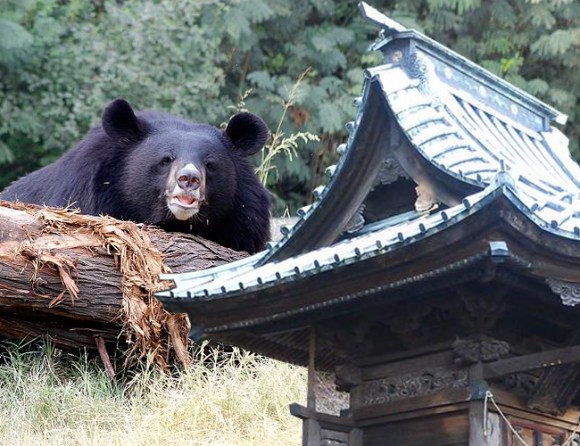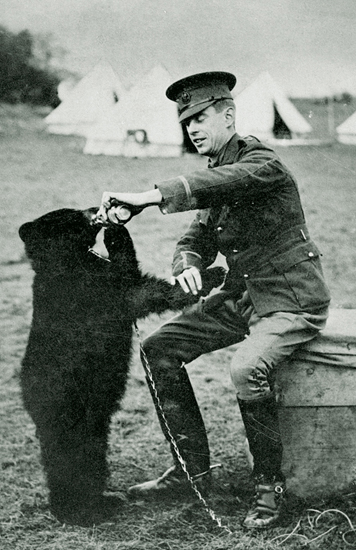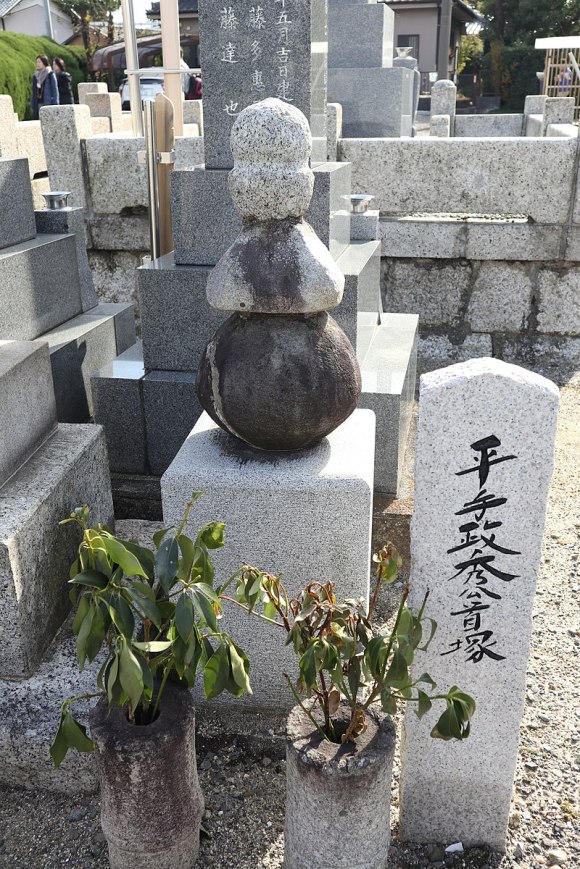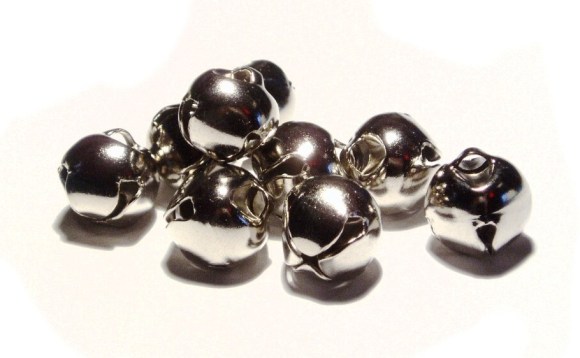
It’s as if bears have no regard for religious symbolism.
On 12 May, the roof of an Inari Shrine in the northern part of Kasai City, Hyogo Prefecture, was found with part of its roof torn off. Inari Shrines are small shrines that act as remote locations for Fushimi Inari-taisha in Kyoto. Despite their relatively small size, it would take a considerable force to tear into a roof of one in such a way.
北播|神も仏もない…ハチミツ狙い墓や神社壊すクマ出没 加西 https://t.co/X5PQbqAZG0
— 銀河系ニュース速報 (@NEWS333) July 11, 2018
兵庫県加西市北部でツキノワグマが好物のハチミツを狙い、ミツバチの巣がある神社のほこらや墓を壊すケースが相次いでいる。
クマに屋根を破壊されたとみられるほこら=加西市大内町(増田正幸さん提供) pic.twitter.com/DsZRRLxKTM
Scattered among the wreckage were small bits of a bee hive that appeared to have been devoured by the attacker, which suggests only one possible culprit: Pooh Bears.
However, since my colleagues inform me that “Pooh Bears” are not in fact real, I’m forced to side with the Wildlife Management Research Center (WMRC) in Hyogo, who identified the vandal as an Asian black bear.
According to the WMRC, black bear mating season is during the months of June and July so they can often be founding wandering near civilized areas in search of mates, as well as food for the winter hibernation.
▼ Although…for the record, Winnie the Pooh was named after a black bear from Winnipeg, so I’m not entirely wrong in my analysis.

Far from a mere plot device in Disney cartoons, bears really do go to great lengths for the sweet taste of honey. According to a WMRC rep, “They love sweet things and their smell is as sharp as a dog’s. They’re attracted to things with strong odors like rotting food or paint.”
However, rather than comically getting their fat tummies stuck in small holes, real-life bears in search of honey is a far more gritty scene involving the destruction of sacred sites. On 10 June, another Inari Shrine in Kasai had a copper plate torn off and the bee hive resting underneath it, annihilated.
Then, on 17 June, a grave was desecrated because it was standing between a bear and its bee hive. The beast tore down a stand for flowers in its wild pursuit of the golden sweet stuff.
▼ Japanese graves often have permanent flower holders for regular visits

Although this bear, or group of bears, clearly has a thing against organized religion, such sites weren’t the only one’s affected. An amateur beekeeper in the area woke up one day in May to find their apiary scratched up with large bear-like claw marks.
In spite of the recent destruction, regional wildlife experts are not overly alarmed. Bear sightings are not uncommon at all around the area, but they seldom result in injury. Also, this year the acorn yield is said to be especially low, causing the large animals to go further in search of alternative food sources.
However, they stress the need for residents to be educated about bear safety, of which the first and foremost rule is: Stay the hell away from bears. Beyond that, the WMRC advises removing all fruits and nuts from nearby trees to avoid attracting bears and wearing a bell when walking in the woods.
▼ They can smell a persimmon from two miles away and yet stinky old me can still somehow sneak up on them? Alright, better safe than sorry I guess.

The damage they’ve caused can thankfully be repaired, but the real tragedy is the bad karma these beasts are racking up. So, let’s all do our part and pray for the bears who know not what they do.
All that bad mojo needs to be cleared up. Otherwise, every time they go to hibernate this year someone will ring the doorbell, and then when they finally do get into bed, Netflix will have removed the movie they were planning to watch before going to sleep. No one deserves that.
Source: Kobe Shimbun Next
Top image: Wikipedia/Grv022, Wikipedia/Zeter114514 (Edited by SoraNews24)

 Death of a Japanese man attacked by bear sparks conversation about what to do when facing off with one
Death of a Japanese man attacked by bear sparks conversation about what to do when facing off with one Honey with Hornets from Japan is exactly what it sounds like【Photos】
Honey with Hornets from Japan is exactly what it sounds like【Photos】 Japanese shrine creates special water fountain for thirsty bees
Japanese shrine creates special water fountain for thirsty bees Japanese shrine’s special drinking spot for bees has the internet feeling the warm fuzzies
Japanese shrine’s special drinking spot for bees has the internet feeling the warm fuzzies Herp derp! Awkward sun bear is awkward, somehow still adorable【Photos】
Herp derp! Awkward sun bear is awkward, somehow still adorable【Photos】 Red light district sushi restaurant in Tokyo shows us just how wrong we were about it
Red light district sushi restaurant in Tokyo shows us just how wrong we were about it McDonald’s new Happy Meals offer up cute and practical Sanrio lifestyle goods
McDonald’s new Happy Meals offer up cute and practical Sanrio lifestyle goods Japan’s massive matcha parfait weighs 6 kilos, contains hidden surprises for anyone who eats it
Japan’s massive matcha parfait weighs 6 kilos, contains hidden surprises for anyone who eats it Anime girl English teacher Ellen-sensei becomes VTuber/VVTUber and NFT
Anime girl English teacher Ellen-sensei becomes VTuber/VVTUber and NFT Sandwiches fit for a sumo served up in Osaka【Taste Test】
Sandwiches fit for a sumo served up in Osaka【Taste Test】 Historical figures get manga makeovers from artists of Spy x Family, My Hero Academia and more
Historical figures get manga makeovers from artists of Spy x Family, My Hero Academia and more Studio Ghibli releases new action figures featuring Nausicaä of the Valley of the Wind characters
Studio Ghibli releases new action figures featuring Nausicaä of the Valley of the Wind characters All-you-can-drink Starbucks and amazing views part of Tokyo’s new 170 meter-high sky lounge
All-you-can-drink Starbucks and amazing views part of Tokyo’s new 170 meter-high sky lounge Kyoto’s 100 Demons yokai monster parade returns!
Kyoto’s 100 Demons yokai monster parade returns! Japanese ramen restaurants under pressure from new yen banknotes
Japanese ramen restaurants under pressure from new yen banknotes French Fries Bread in Tokyo’s Shibuya becomes a hit on social media
French Fries Bread in Tokyo’s Shibuya becomes a hit on social media New private rooms on Tokaido Shinkansen change the way we travel from Tokyo to Kyoto
New private rooms on Tokaido Shinkansen change the way we travel from Tokyo to Kyoto Studio Ghibli glasses cases let anime characters keep an eye on your spectacles
Studio Ghibli glasses cases let anime characters keep an eye on your spectacles Tokyo Tsukiji fish market site to be redeveloped with 50,000-seat stadium, hotel, shopping center
Tokyo Tsukiji fish market site to be redeveloped with 50,000-seat stadium, hotel, shopping center Beautiful Ghibli sealing wax kits let you create accessories and elegant letter decorations【Pics】
Beautiful Ghibli sealing wax kits let you create accessories and elegant letter decorations【Pics】 Studio Ghibli releases Kiki’s Delivery Service chocolate cake pouches in Japan
Studio Ghibli releases Kiki’s Delivery Service chocolate cake pouches in Japan New definition of “Japanese whiskey” goes into effect to prevent fakes from fooling overseas buyers
New definition of “Japanese whiskey” goes into effect to prevent fakes from fooling overseas buyers Our Japanese reporter visits Costco in the U.S., finds super American and very Japanese things
Our Japanese reporter visits Costco in the U.S., finds super American and very Japanese things Studio Ghibli unveils Mother’s Day gift set that captures the love in My Neighbour Totoro
Studio Ghibli unveils Mother’s Day gift set that captures the love in My Neighbour Totoro New Japanese KitKat flavour stars Sanrio characters, including Hello Kitty
New Japanese KitKat flavour stars Sanrio characters, including Hello Kitty More foreign tourists than ever before in history visited Japan last month
More foreign tourists than ever before in history visited Japan last month New Pokémon cakes let you eat your way through Pikachu and all the Eevee evolutions
New Pokémon cakes let you eat your way through Pikachu and all the Eevee evolutions Sales of Japan’s most convenient train ticket/shopping payment cards suspended indefinitely
Sales of Japan’s most convenient train ticket/shopping payment cards suspended indefinitely Sold-out Studio Ghibli desktop humidifiers are back so Totoro can help you through the dry season
Sold-out Studio Ghibli desktop humidifiers are back so Totoro can help you through the dry season Japanese government to make first change to romanization spelling rules since the 1950s
Japanese government to make first change to romanization spelling rules since the 1950s Ghibli founders Toshio Suzuki and Hayao Miyazaki contribute to Japanese whisky Totoro label design
Ghibli founders Toshio Suzuki and Hayao Miyazaki contribute to Japanese whisky Totoro label design Doraemon found buried at sea as scene from 1993 anime becomes real life【Photos】
Doraemon found buried at sea as scene from 1993 anime becomes real life【Photos】 Tokyo’s most famous Starbucks is closed
Tokyo’s most famous Starbucks is closed One Piece characters’ nationalities revealed, but fans have mixed opinions
One Piece characters’ nationalities revealed, but fans have mixed opinions We asked a Uniqlo employee what four things we should buy and their suggestions didn’t disappoint
We asked a Uniqlo employee what four things we should buy and their suggestions didn’t disappoint Princesses, fruits, and blacksmiths: Study reveals the 30 most unusual family names in Japan
Princesses, fruits, and blacksmiths: Study reveals the 30 most unusual family names in Japan Tokyo’s sushi spirit shrine, where the souls of seafood slumber
Tokyo’s sushi spirit shrine, where the souls of seafood slumber Bears serve environmentally friendly coffee and treats via a hole in the wall at new Tokyo cafe
Bears serve environmentally friendly coffee and treats via a hole in the wall at new Tokyo cafe Anime huggy pillows make mainstream inroads with appearance in Cartoon Network series
Anime huggy pillows make mainstream inroads with appearance in Cartoon Network series Town in Japan now protecting itself from bears with Monster Wolf robot【Video】
Town in Japan now protecting itself from bears with Monster Wolf robot【Video】 Japanese shrine may have created the most Kyoto-like “wear a mask” reminder ever
Japanese shrine may have created the most Kyoto-like “wear a mask” reminder ever If you see this seemingly innocent message on a Japanese street, stay away!
If you see this seemingly innocent message on a Japanese street, stay away! We try a delicious hidden gem in Fukuoka, unknown to even Japanese people
We try a delicious hidden gem in Fukuoka, unknown to even Japanese people Draw-your-own fox charms are one of the highlights of Kyoto’s famous Fushimi Inari Shrine
Draw-your-own fox charms are one of the highlights of Kyoto’s famous Fushimi Inari Shrine Become a bear and ‘hibernate’ in the woods with this private hammock tent
Become a bear and ‘hibernate’ in the woods with this private hammock tent Year of the Dragon Pooh! Disney Japan’s plushies gets early Chinese zodiac changeover【Pics】
Year of the Dragon Pooh! Disney Japan’s plushies gets early Chinese zodiac changeover【Pics】 Hanazono Jinja Shrine: Lanterns, stalls and rakes at annual Tori no Ichi cock festival in Tokyo
Hanazono Jinja Shrine: Lanterns, stalls and rakes at annual Tori no Ichi cock festival in Tokyo Japan’s Ninja Bear shot and killed in Hokkaido, eaten as yakiniku in Tokyo, to become stew next
Japan’s Ninja Bear shot and killed in Hokkaido, eaten as yakiniku in Tokyo, to become stew next This Shinto shrine’s gorgeous glass gateways are the only ones of their kind in all Japan【Photos】
This Shinto shrine’s gorgeous glass gateways are the only ones of their kind in all Japan【Photos】 You can buy, and eat, a grilled sparrow on the streets of Kyoto, so we did【Taste test】
You can buy, and eat, a grilled sparrow on the streets of Kyoto, so we did【Taste test】
Leave a Reply